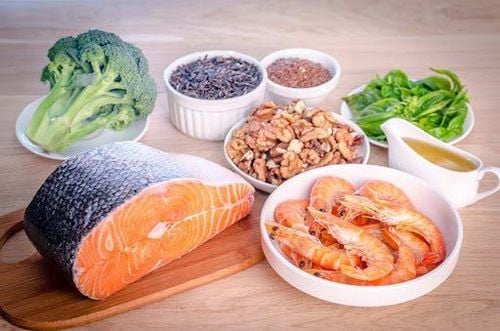This is an automatically translated article.
Endurance and stamina are two different concepts, but a lot of people confuse it. Endurance is not a physical part, it is also the result of a psychological or an event. To improve endurance and endurance you need to have a regular training plan and try to gradually increase the intensity of the exercise in small increments to minimize the risk of injury or burnout.1. What's the difference between stamina and endurance?
1.1 What is stamina? Stamina is the mental and physical ability to sustain an activity for long periods of time. When people talk about stamina, they usually refer to the feeling of being happy or full of energy while doing any activity. Unlike endurance, endurance itself is not a part of the physical, it is also the result of a psychological or an event. Endurance refers to the body's physical ability to sustain an exercise for a long period of time.
When people talk about endurance, they are usually referring to the ability to do an activity without getting tired. It can be seen as the opposite of fatigue, or the ability to feel energized for a long time. Or it can be understood in a case like with a professional athlete can get through the whole match without losing performance. Or the stamina for an 85-year-old man who can have enough energy to play with his grandchildren.
MORE: How to increase body endurance?
1.2 What is Endurance? Endurance is made up of two components, cardiovascular endurance and muscular endurance. In which, cardiovascular endurance is the ability of the heart and lungs to supply oxygen to the body, and muscular endurance is the ability of muscles to work continuously without fatigue. Both of these components of fitness can be objectively measured. For example, heart health can be measured with the 1.5-mile running test and the results can be compared with benchmarks for certain age groups.
Various tests can be used to measure muscle endurance, such as the maximal push-up test for upper body endurance, or the maximal seated posture test for endurance core.

Cải thiện sức bền và khả năng chịu đựng bằng cách lên một lịch trình tập luyện như thực hiện các bài tập aerobic
2. How to improve both?
Improve endurance and stamina by creating an exercise schedule such as doing aerobic exercises that challenge the lungs and heart. Regular aerobic exercise will help improve circulation, which in turn can help you build stamina and endurance. Aerobic exercises refer to exercises that raise your breathing and heart rate, such as: jogging, dancing, swimming, tennis, basketball, hockey, brisk walking, etc. Some tips for increasing endurance and stamina:
2.1 SAID Principle The SAID principle is one of the fundamental components of building an effective fitness program. SAID stands for Specific Adaptation to Imposed Demands which means specific adaptation to imposed needs. It is understood that your body will adapt to the specific type of exercise that you regularly have to do.
For example, if you build an exercise program that mainly includes upper body exercises, your upper body strength will improve but lower body strength will not change.
2.2 Principle of Overload Another fundamental concept for building an effective fitness program is the overload principle. This principle involves gradually increasing volume or intensity to further improve your fitness. For example, if you want to improve your 10 mile run time, you will need to train harder by:
Increase running distance Increase running speed Increase the amount of running time 2.3 Aim for more than 150 minutes per week Exercise Regular intake can help boost energy levels, sleep better, and increase blood flow throughout the body. The American Heart Association recommends at least 150 minutes of aerobic exercise per week to strengthen your heart and lungs.

Yoga và thiền là những hoạt động giảm căng thẳng trong thói quen hàng tuần của bạn
2.4 Yoga or meditation Yoga and meditation are stress-reducing activities in your weekly routine that can help you relax and improve your ability to handle more intense exercise. A 2016 study found that medical students who underwent six weeks of yoga and meditation experienced significant improvements in focus, endurance, and mental well-being.
2.5 HIIT (High Intensity Interval) Training High Intensity Interval Training (HIIT) that consists of repeated bursts of high intensity intervals with periods of rest. An example is a 10 second sprint with 30 seconds rest in between each sprint. Along with improving heart health, high-intensity interval training can improve insulin sensitivity, blood pressure, and help you lose belly fat. High-intensity interval training is an advanced form of exercise and is best suited for people who are already physically active.
2.6 Find Exercises You Like Many people associate exercise with lifting weights and running on a treadmill,... However, if you don't like these activities, there are plenty of ways to do them. improve fitness. Instead of having to do an exercise you don't like, choose activities that you enjoy. For example, if you don't like running but love to dance, you can take a dance class like Zumba which is a great way to improve your fitness.

Uống đủ nước trong thời tiết nóng để tránh mất nước
2.7 Stay hydrated To prevent dehydration while working out, it's important to stay hydrated, especially if you're training in hot or humid conditions. If your workouts are long, you might consider taking electrolytes to replace the minerals lost during sweating.
In short, endurance and endurance are different in that endurance is not a part of the physical, but it is also a result of psychological or some event. To improve endurance and endurance you need to have a regular training plan and try to gradually increase the intensity of the exercise in small increments to minimize the risk of injury or burnout.
Please dial HOTLINE for more information or register for an appointment HERE. Download MyVinmec app to make appointments faster and to manage your bookings easily.
Reference source: healthline.com












